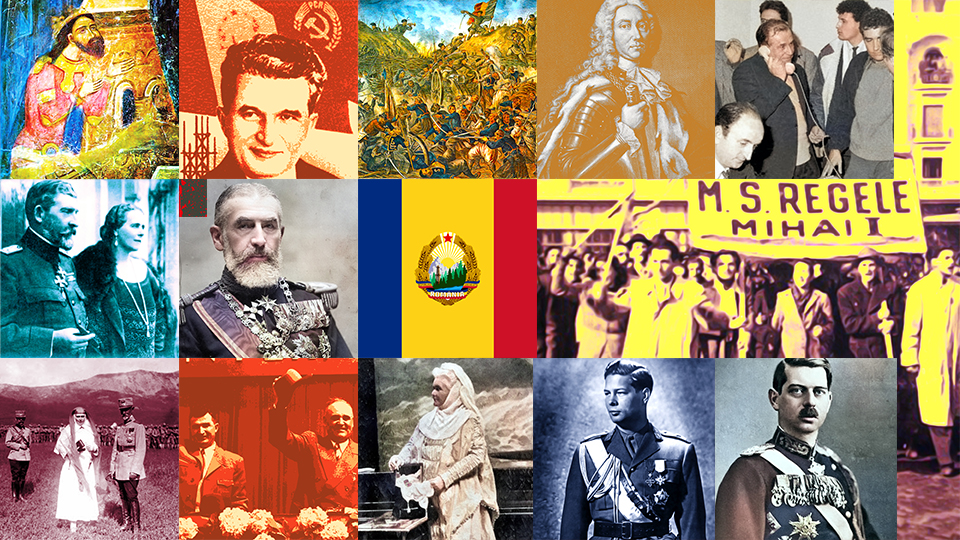The early days of Romanian Gendarmerie
The first gendarme units were formed in 1850 and are one of the first institutions of the Romanian state.

Steliu Lambru, 06.10.2025, 14:00
The Romanian state started creating its force structures in the middle of the 19th century. One of them was the Gendarmerie, which appeared in the Principality of Moldavia in 1850. However, structures with attributes regarding public order and peace and the defense of citizens and their property had existed previously. They bore various names, since 1829, after the conclusion of the peace treaty between Russia and the Ottoman Empire, being called “militia”, “guard” or “national guard”. Although with reduced numbers, the Gendarmerie participated in the Romanian War of Independence in 1877-1878 and in the Second Balkan War in 1913. It also participated in the two world wars. In 1893, the Rural Gendarmerie was established. In the 175 years of existence, there are heroic pages in the history of the Romanian Gendarmerie, but also dark pages such as participation in the suppression of the 1907 uprising and the Holocaust in the 1940s.
The Gendarmerie was abolished by the communist regime in 1948 and re-established in 1990, after the anti-communist Revolution of 1989. In the archive of the Oral History Center of the Romanian Broadcasting there are interviews with former gendarmes who remember the historical moments in which they participated, one being Colonel Grigore Meculescu. In 1995, he recalled how, as a student of the Gendarmerie School, he was part of the defense device of the Gendarmerie headquarters during the legionary rebellion of January 1941. Track: “The Gendarmerie Officers School was also involved in this event, which was tasked with guarding the General Inspectorate of the Gendarmerie on Şoseaua Ştefan cel Mare. During this period, we, all the students, made a plan to defend the building of the General Inspectorate of the Gendarmerie. In the event that the legionaries would attack this building and this institution, we had to be able to face this attack. The legionaries came in massive groups on Ştefan cel Mare chanting . There was some information that would have indicated that an attack could occur on the institution and the building of the General Inspectorate of the Gendarmerie. And it was precisely to prevent this attack that this defense of the General Inspectorate of the Gendarmerie was made. They passed, stopped for a moment in front of the General Inspectorate of the Gendarmerie. But, probably, seeing our arrangement in the Inspectorate’s defense device, they gave up and moved on.”
Major General Mihail Baron, in 1995, recalled the day of the great change of alliances that Romania made on August 23, 1944. At that time, he was an officer on duty in the barracks of the Infantry Gendarmerie Regiment and had to get involved in the annihilation of the German armies in Bucharest: “Around 8 o’clock in the morning, I woke up at the regimental gate to be called by a cavalry captain. He was very agitated and told me that he had come to us to give them help, otherwise the Germans would break the encirclement. I immediately reported to the regimental commander and he ordered me to gather the men who were available in the barracks, two platoons, and I sent them there, plus a group of machine guns. Surrounded and caught in the fire of machine guns, after about half an hour, the Hitlerites put up white flags and surrendered. While they were being escorted by gendarmes to the regiment, the gendarmes were fired on from the Grand Hotel. Some of the gendarmes forced their way into the Grand Hotel and took the German officers who were quartered there and brought them all together to the courtyard of the Infantry Gendarme Regiment. Prisoners were brought about 230 officers, non-commissioned officers and troops, including two or three typists.”
General Emil Mihuleac, also in 1995, remembers what followed after the end of the war when the new communist regime abolished the Gendarmerie School and, implicitly, the Gendarmerie. Some historians consider that measure as a punishment for an elite weapon considered the “watchdog of capitalists and landowners” and “the landowners’ tool” for robbing peasants: “The school was important not only because of the quality of the students, but also because of the value of the staff, being in the same building as the General Inspectorate, where it was assumed that only officers with high professional qualities, people with a perfect military culture, would end up. In fact, most of the officers in the command were graduates of the Higher War School. So they were highly qualified soldiers. Also, the educational process had some special components in relation to the state of military education at that time. The student in the Gendarmerie Officers School went through 3 component sides of a complex training during the 3 years of school. This created a number of very well-trained officers who stood out during the war both in the East and in the West, because of this, they had a military training, they rendered great services to the army, to the country.”
The Romanian Gendarmerie was an important constitutive institution of the Romanian state and behaved as people and society behaved at a given historical time. It already has a tradition that must be evaluated with rigor and understanding of human limits. (EE)




























